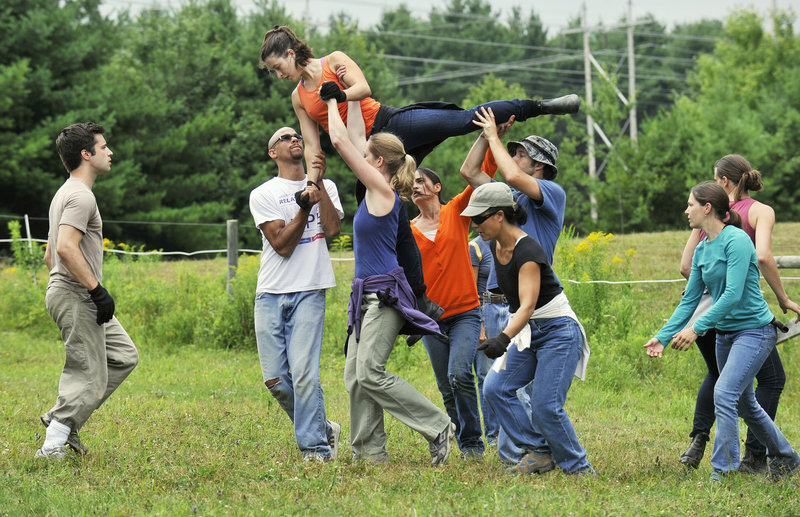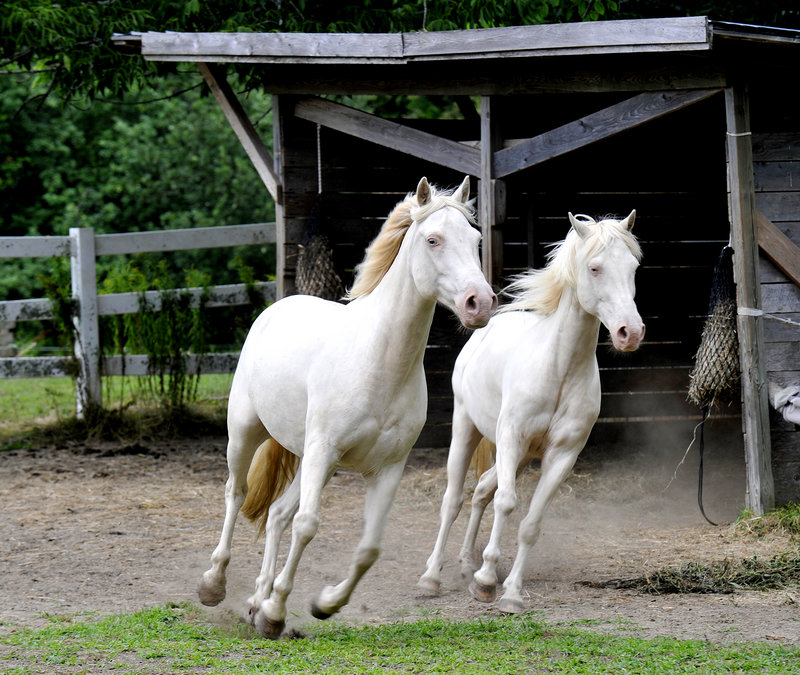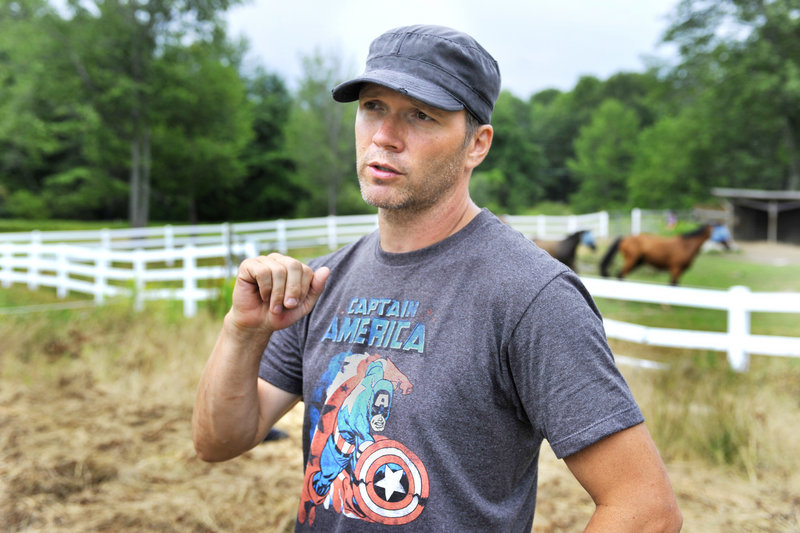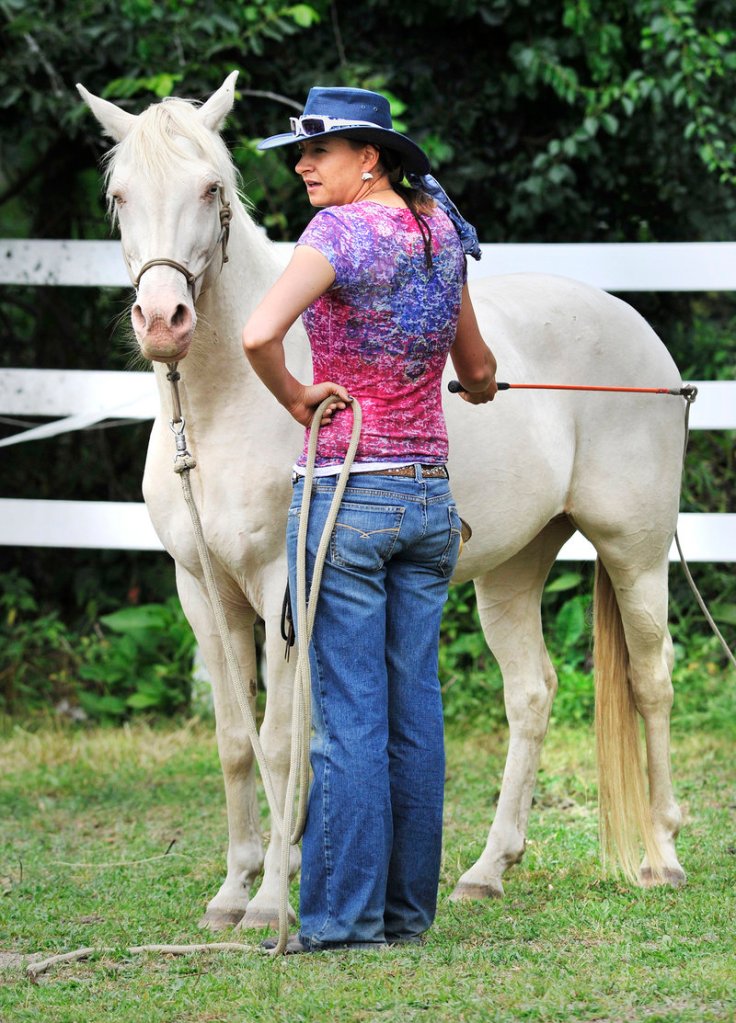POWNAL – One thing is fairly certain: No one, not even the performers, knows how this dance will end.
This weekend, dancers from the Bates Dance Festival will interact with horses in what very well may shape up as a stunning and daring piece of performance art. Then again, it could unravel and fall victim to the unpredictable nature of the majestic and powerfully independent equines.
“They change all the time,” said Carl Flink, a choreographer from the Minneapolis-based Black Label Movement dance company. “The horses are not interested in all this meticulous planning. They’re just totally not interested.”
The project, called “UN/Stable Landscape,” will be presented at 2 p.m. Saturday and Sunday at Chance Encounter Farm, a lush, sprawling farm on Fickett Road in Pownal. The piece, which will last about an hour, will involve 25 dancers and five horses.
The goal is to create a site-specific performance piece, using the pastoral features of the farm, the uncanny ability of the human body to project movement and emotion, and the gentle energy of the horses.
Alternating between measured movements and unbridled physicality, “UN/Stable Landscape” is a collaboration between JoAnna Mendl Shaw’s Equus Projects and Flink’s Black Label Movement. Their choreography attempts to narrate a story about landscape and the humans and horses that live on it. The piece explores the synergy between humans and horses, while emphasizing the artistry of dance and the athletics of the equestrian arts.
A key to understanding “UN/Stable Landscape” is recognizing that the dancers who interact with the horses are not necessarily trying to control them, as much as they are attempting to communicate with them, Shaw said. The horses in this piece have been trained in the Parelli Natural Horsemanship discipline, which emphasizes communication with horses based on natural horse behaviors.
A Parelli trainer, Farrah Green of South Dakota, worked with the horses in a paddock at Chance Encounter Farm to prepare them for their interaction with the dancers.
“We’re teaching these horses to run with people,” said Shaw, whose company travels across the country for site-specific work such as this. “It’s easy to chase them. It’s not so easy to get them to want to be with you.”
And that is where the unpredictable nature of this piece comes into play. We know reasonably well that the human dancers will do their part, based on weeks of rehearsals. As the choreography dictates, they will create a serpentine loop down the hill, executing a series of falling phrases with their bodies as they move slowly and deliberately toward the paddock.
Whether the horses do their part will dictate the outcome of the piece.
The Parelli strategy involves the humans working with the horses at the animal level. The human dancers must subject themselves to herd behavior and become pack leaders through alpha negotiations. And so while Green’s training requires working with the horses, it also requires working with humans to teach them to think like horses.
“Everything comes down to you,” she told a group of humans who were in the paddock with two ponies last week. “You are their leader. You can tell the horses what you want them to do. If you stop, their energy stops there. Every time they stop, be sure to rub their necks. And every time they come to you, I want you to breathe out.”
As the pack moves quickly around the fence line — two ponies churning up dirt and dust, three dancers moving tentatively, perhaps with fear — Green saluted their bravery, as well as their success.
“You’re running with horses. Isn’t it fun?”
Staff Writer Bob Keyes can be contacted at 791-6457 or at:
bkeyes@pressherald.com
Follow him on Twitter at:
twitter.com/pphbkeyes
Send questions/comments to the editors.






